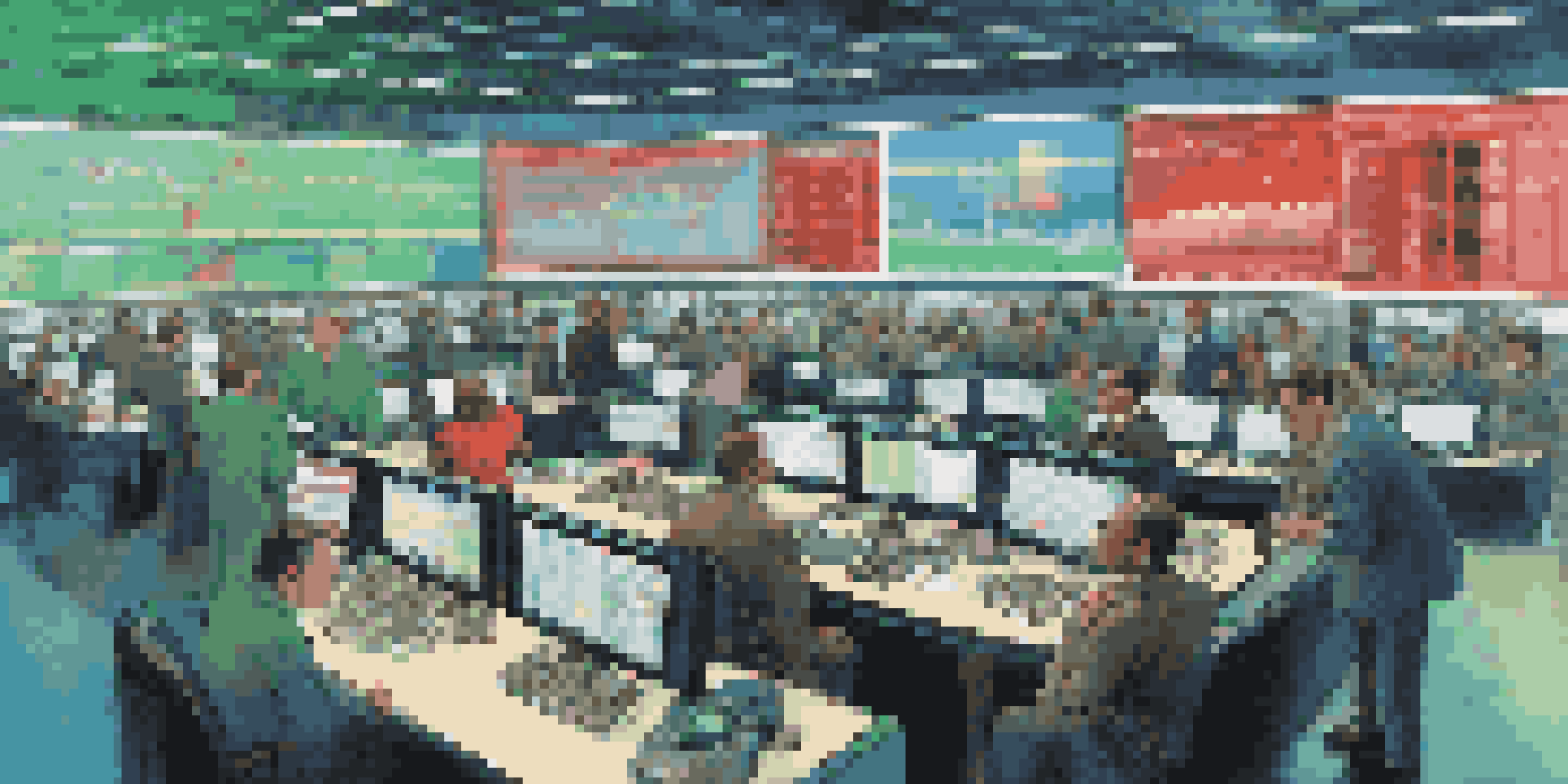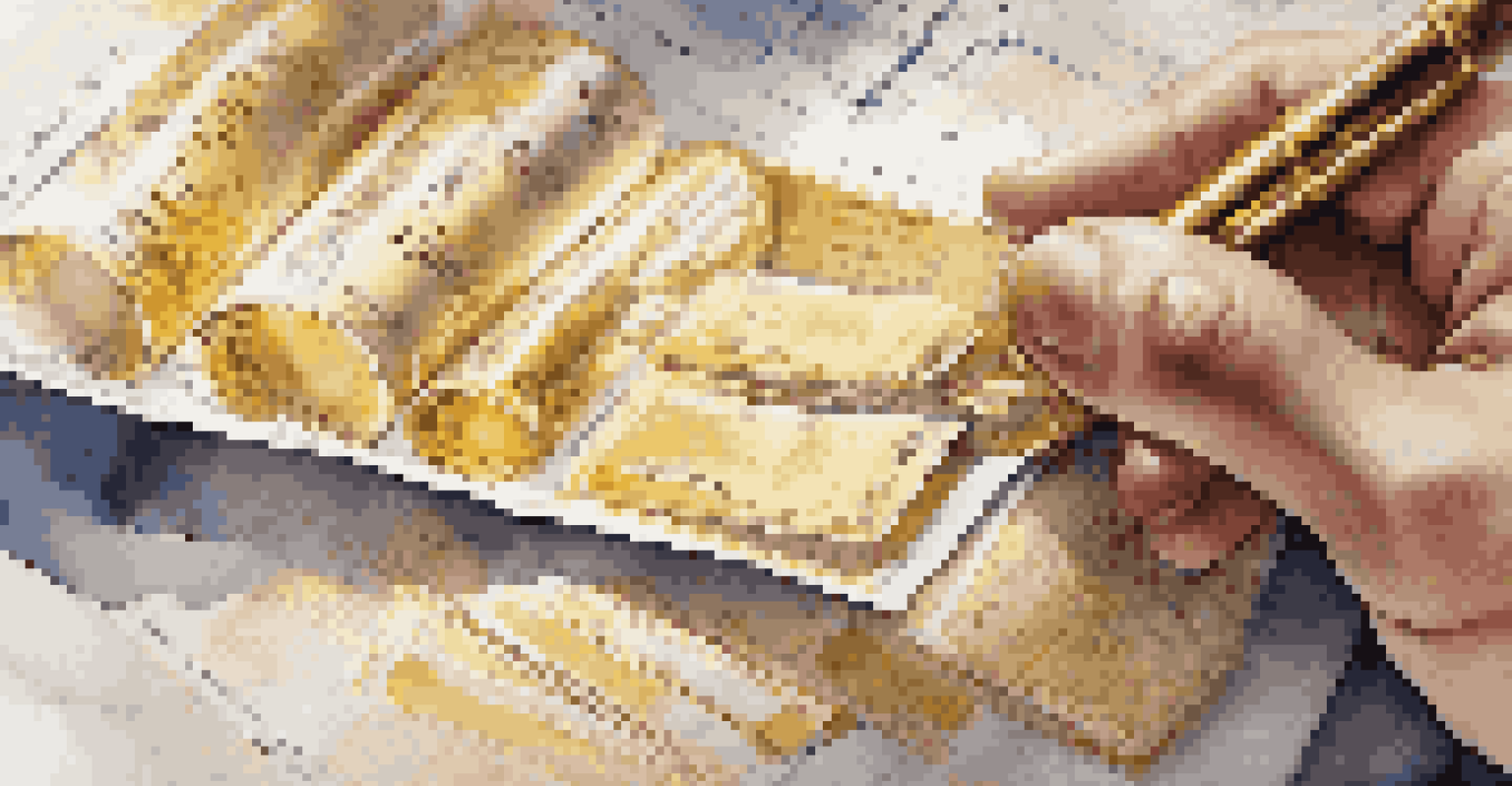Fundamentals of Commodity Trading for New Investors

Understanding What Commodities Are in Trading
Commodities are basic goods that can be traded, such as oil, gold, or agricultural products. They are typically standardized and interchangeable, which means one unit of a commodity is essentially the same as another. This uniformity makes commodities a unique asset class in the trading world.
In investing, what is comfortable is rarely profitable.
Investors often trade commodities to hedge against inflation or diversify their portfolios. For example, if you believe that the price of gold will rise, you might purchase gold futures to profit from that increase. Understanding the types of commodities—like hard (metals) and soft (agricultural)—is crucial for any new investor.
In essence, commodities form the backbone of many industries, and their prices can be influenced by various factors including supply and demand, geopolitical events, and weather patterns. This makes them an exciting, albeit volatile, investment choice for newcomers.
How Commodity Trading Works: The Basics
Commodity trading can occur on various exchanges, where buyers and sellers come together to trade contracts. Each contract specifies the quantity and quality of the commodity being exchanged. This trading can take place through futures contracts, options, or spot trading, depending on your investment goals.

Futures contracts are agreements to buy or sell a commodity at a predetermined price at a specific time in the future. This allows investors to speculate on price movements without needing to own the physical commodity. It’s important to grasp how leverage works here, as it can magnify both profits and losses.
Understanding Commodities Basics
Commodities, like oil and gold, are standardized goods traded in various markets, making them essential for portfolio diversification.
For new investors, starting with a demo account can be beneficial. This way, you can practice trading commodities without financial risk while familiarizing yourself with market dynamics and trading platforms.
Key Factors Influencing Commodity Prices
Commodity prices are influenced by a myriad of factors including supply and demand, geopolitical events, and economic indicators. For instance, a drought can significantly impact the prices of agricultural commodities, while political instability can affect oil prices.
Risk comes from not knowing what you're doing.
Understanding these influences can help you make informed trading decisions. By keeping an eye on news and reports regarding production levels, inventory data, and global economic conditions, you can better anticipate market movements.
Moreover, seasonality plays a role as well—certain commodities may have predictable price patterns based on the time of year. For example, natural gas prices often rise during winter months due to increased demand for heating.
The Role of Brokers in Commodity Trading
To trade commodities, you'll typically need to work with a broker who facilitates your transactions. Brokers can provide valuable insights and tools to help you navigate the complex commodity markets. They can also offer different types of accounts depending on your trading style—be it active or passive.
Choosing the right broker is crucial for new investors. Look for one that provides a user-friendly platform, educational resources, and competitive fees. Researching customer reviews and ratings can also give you a sense of their reliability and service quality.
Key Influences on Prices
Prices of commodities are affected by supply and demand, geopolitical events, and seasonal changes, requiring traders to stay informed.
Additionally, many brokers offer demo accounts that allow you to practice trading before committing real money. This can be an excellent way to build your confidence and understanding of the trading process.
Risk Management Strategies in Commodity Trading
Like any form of investing, commodity trading comes with risks. New investors should prioritize risk management strategies to protect their capital. One basic approach is to set stop-loss orders, which automatically sell your position if it reaches a certain loss threshold.
Another strategy is diversification—don't put all your eggs in one basket. By trading different types of commodities, you can reduce the impact of any single market's volatility on your overall portfolio. For instance, if you invest in both oil and agricultural commodities, a downturn in one might be balanced out by stability in another.
Finally, it's essential to keep emotions in check. Emotional trading can lead to impulsive decisions, often resulting in losses. Developing a clear trading plan and sticking to it can help maintain discipline.
Technical and Fundamental Analysis in Trading
Analyzing market trends is crucial for successful commodity trading, and this is where technical and fundamental analysis comes into play. Technical analysis involves studying price charts to identify patterns and trends that can help predict future movements. Indicators like moving averages and relative strength index (RSI) are commonly used.
On the other hand, fundamental analysis focuses on understanding the underlying factors that affect commodity prices. This includes analyzing global supply and demand, economic indicators, and even weather conditions. By combining both analyses, you can create a more comprehensive view of the market.
Importance of Risk Management
New investors should implement risk management strategies, such as stop-loss orders and diversification, to protect their investments.
For new investors, it might be helpful to start with one type of analysis and gradually incorporate the other. This way, you can build your skills and confidence in interpreting market data.
Getting Started: Steps for New Commodity Traders
If you're ready to dive into commodity trading, the first step is to educate yourself. There are numerous resources available, including books, online courses, and trading forums. The more you know, the more prepared you'll be to make informed decisions.
Next, select a reputable broker that aligns with your trading goals. Consider factors like fees, trading platform, and customer support. Once you've chosen a broker, you can open a trading account and start with a demo account to practice your skills.

Lastly, develop a trading plan. This should outline your trading goals, strategies, and risk management techniques. Having a clear plan will help guide your trading decisions and keep you focused on your objectives.